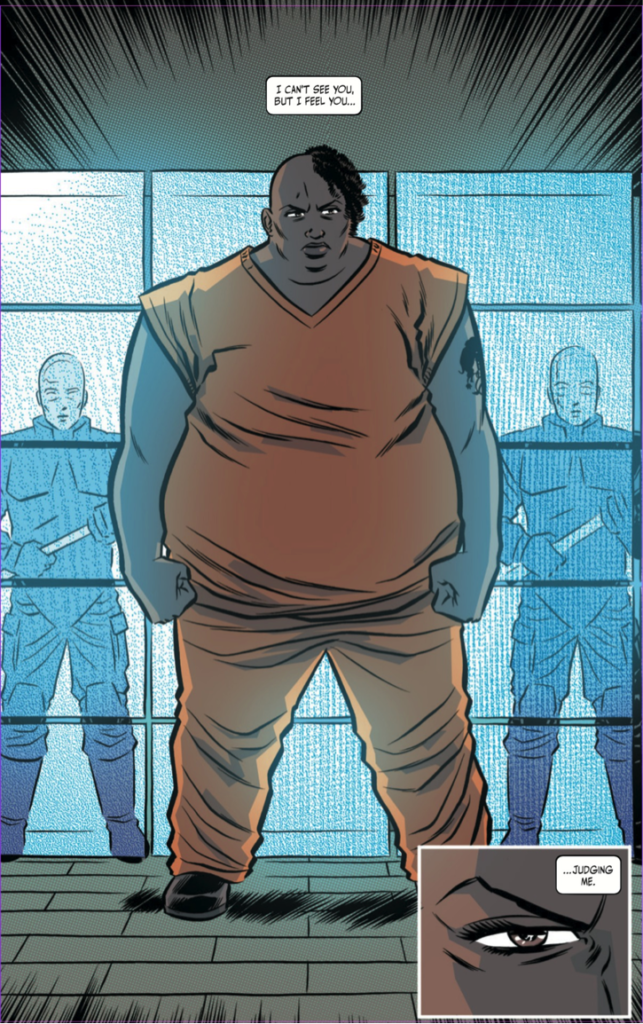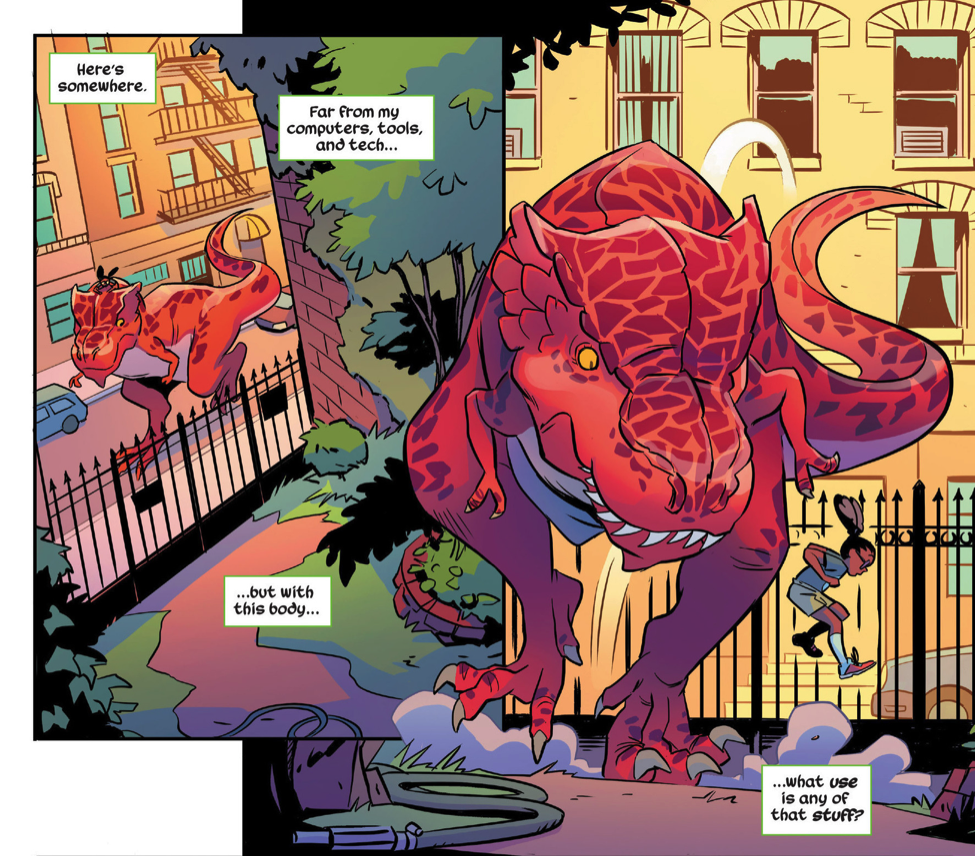When It Ain’t Broke: Black Female Representation in Comics
This guest post is part of our new blog series on Comics, Race, and Society, edited by Julian Chambliss and Walter Greason.

In a 1976 essay appearing in In Search of Our Mother’s Gardens, Alice Walker notes that an absence of models, or literary representations, is an “occupational hazard to the artist, simply because models in art, in behavior, in growth of spirit and intellect—even if rejected— enrich and enlarge one’s view of existence.” She warns that without such models entire artistic communities suffer. Walker goes on to provide a glimpse of her own models, listing several influential artists, not all of them women, not all of them black. She insists that these writers are in the business of “saving lives”: representing the misrepresented, the distorted, the erased or lost. She argues that this kind of representation is the business of art.
I’ve returned many times to this passage in considering the ongoing conversations about representation and diversity in the comic book industry. There has been much discussion of industry trends and failed attempts produced by mainly white writing staff. While industry-wide campaigns to represent minority characters sound exciting, what kind of stories can and are being told when the makeup of comic book writing teams hasn’t shifted dramatically? Is witnessing various lives in print or on-screen sufficient as Walker seems to suggest? What does changing the face of comics but not the artistic producing bodies do to the genre of comics? More specifically, what does the increased number of black women in comics (not necessarily written by women of color) offer a comic book readership?
I would argue that some comics have much to offer, and that recent series like Image’s Bitch Planet and Marvel’s Moon Girl and Devil Dinosaur offer new and fuller models of intersectional embodiment that we haven’t seen in popular comics thus far.

Questions and problems of embodiment, of strength and weakness, of the post-human, gender, and monstrosity, could be considered standards of many mainstream comic book franchises and these conversations were once solely focused on white bodies that aligned with a presumed white male readership. Traditionally, we have seen that white male embodiment is slow or reluctant to reveal systemic problems and do the work of representing how we live with the weight of historical oppression and violence.
Yet over the past several years, comics readers have seen a proliferation of characters of color, especially of women and girls of color. And once we begin to focus on the embodiment of these women’s realities come into sharp focus. The questions and problems raised by their bodies become scripts or models through which we can read the actualities and limitations of the comic book’s world. Similarly, we can see the serialized and ephemeral nature of comics easily reflecting the real-world racism, sexism, and classism that structure American society.
The two character models I highlight below, Penny Rolle of Bitch Planet and Lunella Lafayette of Moon Girl and Devil Dinosaur, prompt readers to see these series through a womanist, black woman centered, or black feminist, framework. These series focus on articulations of particular black womanhoods and allow us to consider and ask questions that we cannot answer with other bodies.
Kelly Sue DeConnick and Valentine De Landro’s Bitch Planet is a self-described “women-in prison sci-fi exploitation riff.” The series is set in a technologically fortified patriarchal world in which “deviant” women are sent off-world due to “non-compliance.” In the first two issues, readers are dropped into a main narrative that offers slivers of world building through dialogue and setting, yet we are not privy to the total picture until Bitch Planet #3: Too Big to Fail. In this issue readers are given inmate Penny Rolle’s backstory.
Penny is part of the ensemble cast and does not seem to be an integral part of the unfolding plot. Yet we find that Penny’s presence—her body—is incredibly important to the narrative. She is central—the key—to seeing and beginning to understand the realities of this imagined near future. As readers, we are shown that everything about Penny’s body from her large frame, mixed race parentage, desire to be physically strong, interest in laughter and play, explosive tendencies, all the way down to her “unruly” and unpredictable mixed curl-pattern hair make her an enemy of the white patriarchal “Fatherhood” state.

Penny, who often visually exceeds the limits of the frame, loves her body. Her “if it ain’t broke don’t fix it” attitude poses a serious challenge to the structures of power that operate in the series. In fact, her body is a threat to the prison “Bitch Planet” itself. Within the issue, we see authority figures struggle with an insubordinate Penny whose confidence in her body can withstand even the “cerebral potential integration and extrapolation matrix”— technology that is supposed to reveal her “true” feelings about her appearance. Nothing, it seems, can break her.

DeConnick and De Landro offer Penny’s body, as the framework, the tone, and intent for the series. We see the sexist, racist, homophobic, transphobic work of the Fathers refracted through Penny’s body. While there are many bodies in the world of Bitch Planet that are different, powerful, and renegade, Penny’s body, which is part of her crime, and her persistence in loving herself, is fugitive, interrupting the system if only for a moment. Instead of being inexplicable or illegible, Penny Rolle is the nexus through which the reader interfaces with the world. Penny allows us to re-center conversations of equity, justice, and revolution through the lens of a black woman, and a womanist framework. Such a change of focus is certainly something new.
The second model we might look to is Lunella Lafayette—one of the youngest, smartest, and, by way of these characteristics, one of the most isolated people in the Marvel Universe. Unlike Penny, Lunella’s body is not specifically rendered as oppositional to the state. Yet her concerns about her body, her age, and her genius, as well as her imminent transformation into an Inhuman, structure the narrative and design of the series.
Written as an attempt to attract not only a more racially diverse but also an age-diverse readership, in Moon Girl Reeder, Montclare, and Bustos effectively render the realities of black girlhood by doubling down on Lunella’s difficulties. She is not only different from her classmates, but also isolated her from other geniuses by educational access and age. She cannot take solace or comfort in her family because she fears what will happen to them once she transforms.
Yet once Lunella does transform she finds her body unchanged. The transformation leaves her DNA intact, but allows her to swap brains with her sidekick, Devil Dinosaur. Throughout the series Lunella’s small frame, intelligence, and her methods as Moon Girl are juxtaposed with Devil Dinosaur’s and when they switch places Lunella is forced to adapt new tactics of embodiment: self-making through inventing and technology must be translated into terms of the body. In these moments we can see that Lunella is aligned with a literary tradition of black inventors or “tinkerers” like Ralph Ellison’s Invisible Man. Lunella feels most like herself, most in control, when she is building.

As Lunella, begins to work through the problems of (monstrous) embodiment: how to exist and problem-solve in a deviant dinosaur body, we see such transactions isolating her own body further from her human and superhuman counterparts. For each time Lunella returns to her 3-foot frame, she is restrained. Interestingly enough, these moments leave her not with the same worries of isolation but instead with a growing determination to change her reality instead of hiding or ignoring problems as she once did. Her connection to Devil Dinosaur reframes the way in which Lunella (and the reader) can read her own embodied situation. Devil Dinosaur is simply an accessory to this exploration.

Nine-year-old Lunella provides a new lens for the “growing up” and “identity” questions that are comic book standards. To witness a black girl dealing with isolation, awkwardness, and owning herself is not only empowering for readers, but is a narrative of black girl valuation. Lunella, as a model, persists without structures of authority (super-powered or otherwise). Even as the “weakest” of the inhumans, Lunella’s story can be recognized and read.
In these ways, comics like Bitch Planet and Moon Girl are narratives that are focused on and refracted through black women. They offer models, or the kind of valuable representation Walker highlights. They take steps away from metaphorical blackness, stale monoliths, and expected symbols towards lithe narratives interested in shifting focus and investigating possible lived realities that have traditionally been misrepresented and misunderstood. It would seem that when it comes down to a question of representation and models, these particular comics are doing the work. Hopefully others will begin to do the same.
Alyssa Collins is a graduate student in the Department of English at the University of Virginia. Her research interests include 20th Century American, African American, Global and Transnational Studies. Follow her on Twitter @LyssaDee.
Copyright © AAIHS. May not be reprinted without permission.